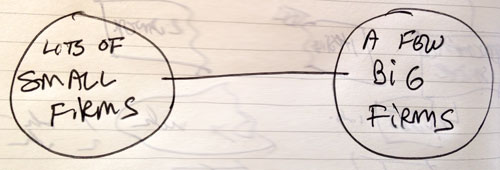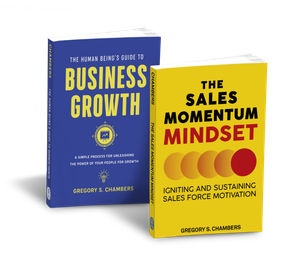Predictable Growth for Professional Service Firms
Predictable Growth for Professional Service Firms

What would you think of a book that teaches readers to learn how buyer’s decision processes are changing and how to prepare professional service firms for those changes? It would include sections on controlling the conversation, planning technology outlays, working with consultants/contractors, mapping the acquisition process, developing a marketing database, nurturing leads and testing campaigns. What follows is a rough sample.
What it looks like when it works, Predictable Growth
The Predictable Growth organization looks like other successful firms on the surface. Where the differences show up is in how they communicate with their clients and prospects. An outsider observing a PGO would see and hear a few things. Staff seems to be on message but not because they use the same memes to describe their business. It's subtler, like observing a meeting where you hear a junior staff member deftly control a conversation through verbal rhetoric or at a client site meeting where you see a partner look for connections to a prospect the firm would enjoy working with.
Let me go further, you hear the leadership describing their growth plans with a certainty that borders on alarming. As if they were looking into a crystal ball and could predict when to invest in capacity and when it would be better to press for more client activity. They speak of new lines of business and how painful it is to watch favorite projects run their course.
Clients are able to describe their projects by the value the firm is providing and rarely speak to the fees they pay except in that teasing way that tells the listener that they’d be happy to pay double. The billing shows a healthy mix of hourly rates and some fixed fee projects that you haven’t seen before. Prospects seem eerily educated about what the firm can and can’t do, as if they used to work there. You later tie that back to the way the describe their issues, everyone uses the same words.
When we dig around to find the business development team we see it made up of the usual characters. A small marketing department that helps with messaging and keeps the branding consistent. A dedicated business development professional, the rainmaker, who fits the outgoing, confident mold the job requires but seems to be disarmingly interested in what you have to say. Nothing out of the ordinary there until you get to the two characters sitting in front of all the monitors. They describe themselves as the IT guys but are combing through reams of data and reports. The marketing director tells you that they are the business analysts that the group uses to help identify areas of focus. You’re struck by how well those people seem to work together.
What you don’t get to see but you hear hinted at is the financial security that firm members are experiencing. There doesn’t seem to be any consternation about what will happen when a major partner moves to retirement. At other firms you’ve noticed that the leadership is concerned about the lack of “entrepreneurial spirit” in the junior partners. Not here. The junior partners look the same and have the same non-entrepreneurial backgrounds, but something seems different when they speak.
That's it.
It’s a snapshot of the firm at a point in time and it’s a flattering one. Watching the movie of how they got there isn’t quite as impressive as the photo we peeked at, but it’s obvious that the leadership was bought in to the concept from the beginning. They were the first to recognize that they couldn’t just hope that their firm would begin to attract the clients and employees that it needed to sustain growth through the transition from founding partners to junior staff. For that to happen, there needed to be a structure that supported client and staff development. Things that were happening across the old organization in fits and spurts, but now it's systematized and processed.
You can build this Predictable Growth machine and it doesn’t need to be disruptive or require wholesale changes to staff. Like most things, it’s a process, not an event. Your journey begins with the recognition that small improvements add up to big changes over time. For your firm to make strides and still be able to respond to changes in the marketplace, you need to begin with the end in mind.
“A goal without a plan is just a wish.” – Antione de Saint-Exupery
This book will lead you through my goal for your firm. It takes time to implement and simply cannot begin without buy in from the top. In the next chapter I’ll talk about the changes that your future firm is going to face due to changes in how we consume information. You see it every day and it’s time to consider how the firm of the future is going to work with the next generation. As you read through this, take time to reflect on the big wins that took you from the bottom to the top of the organization. If you’re like most partners that I’ve worked with, there is an element of serendipity in each of those stories and that’s what makes it hard to pass down to your junior members.
Knowing their future buyer will help you steer them through the early stages of this transition into the Predictable Growth future.
And that, my friends, is part of the Introduction. What do you think?
Good stuff.
About the Author: Greg Chambers is Chambers Pivot Industries. Get more business development ideas from Greg on Twitter.





